Public Lands & Dark Skies
The Public Lands & Dark Skies student research team works with the CC’s State of the Rockies and Journalism Institute to conduct in-field interviews of visitors at the most popular public lands in the Rocky Mountain West. The team uses Conservation in the West Poll-based interview questions to corroborate the most recent poll and build on summer 2022 survey results. This year the focus has shifted towards assessing the importance of Dark Skies.
Along with their research through the survey, the students will be conducting their own personal projects.
This project is made possible with the support of the William and Flora Hewlett Foundation.
Project Objectives
2023 SCORE Poster
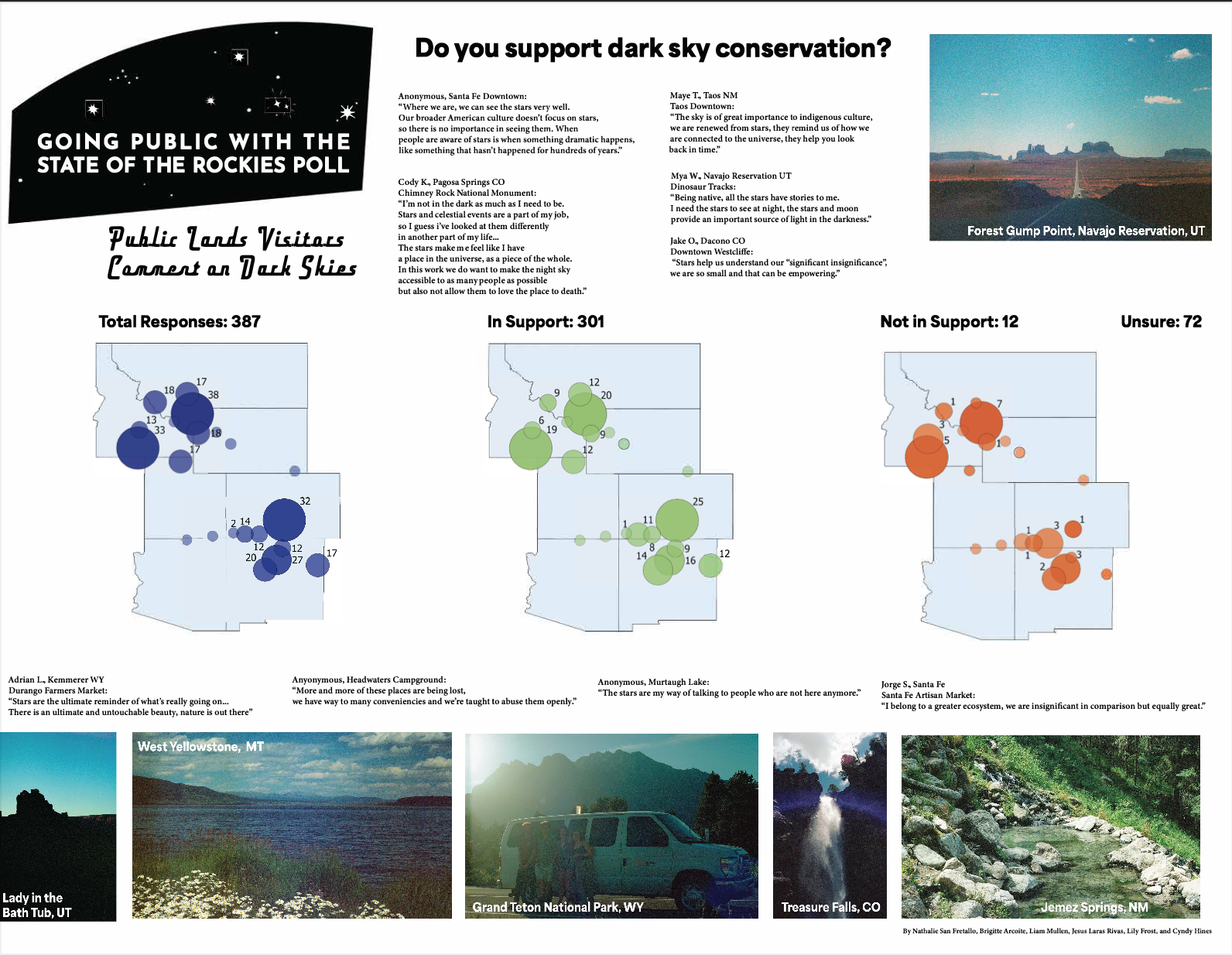
Personal Projects 2023
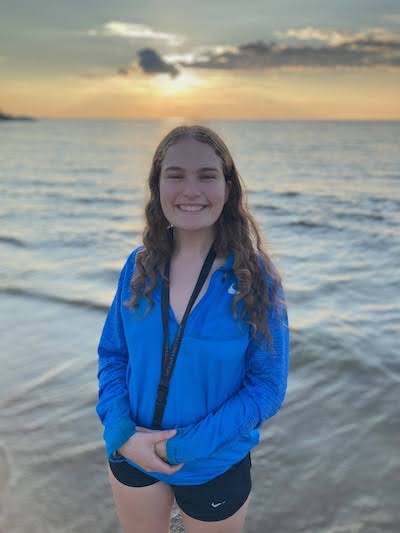 Brigitte Arcoite '24
Brigitte Arcoite '24
Brigitte is interested in educating herself and others about diversity in the outdoors. This desire is inspired by her experience growing up at a state-funded wilderness education program that offered children involved with the state—both criminally and in the foster system—the opportunity to get outside. Coming to Colorado College and its extension of the already exclusive outdoor culture, she experienced a culture shock at the way the outdoor education program operated. While well-funded and endowed with strong participation, the lack of attention to making the space more accessible to underrepresented voices was apparent. In this project, Brigitte’s hope is to travel across the Rocky Mountain West to further inform our understanding of public perceptions about the importance of inclusivity in outdoor recreation. Using the Conservation of the West Poll as a reference, she hopes to expand and emphasis on hearing new ideas and perspectives about how things might be done. Furthermore, while the data provides information on perceptions of childhood outdoor education and inclusivity separately, it lacks in combining those two perspectives. In this project then, I will pay particular attention to programs focused on increasing accessibility to adolescents, seeking out conversations with participants and/or directors of outdoor education programs across our survey area. Brigitte’s current goal is to share a piece of journalism that captures the dialogues she hopes to have while having conversations with recreators out in the West. A model for this Deeyah Khan’s films “White Right: Meeting the Enemy” and “Jihad: A Story of the Others” whose work has tackled the popular perception of extremism. Another idea, she is interested in is transferring her work into an experiential outdoor expedition. The goal would be to incorporate some of the ideas and understandings that she has gathered over the course of this research into an outdoor education trip that purportedly seeks to address issues of inclusivity in the outdoors.
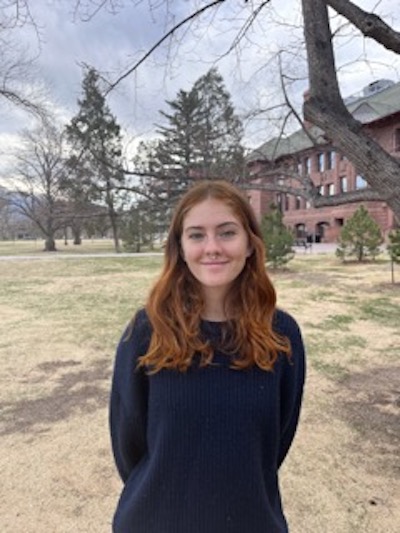 Lily Frost '26
Lily Frost '26
For her individual project, Lily wants to explore people's emotional response to being outdoors and their connection to the land, particularly with experiences of awe and transcendence and the possibility of spiritual and prosocial outcomes. She is interested in talking to people about moving aesthetic experiences of their past and present by visiting beautiful and awe-inducing locations while also considering concepts surrounding Dark Skies conservation. Her final product will be in visual media format, either a series of photos or a video.
 Jesús Lara Rivas, '25
Jesús Lara Rivas, '25
Jesús’ project will compare and contrast geochemical and economic indicators of human impact on the natural landscapes of the National Parks of the Rocky Mountain region. His primary goal is to answer the question: To what extent do human activities surrounding the National Park Industries diminish land preservation and cause negative effects in the surrounding environment? Using, problems with infrastructure, visitor capacity, water, air, land contaminants, and damage to the local economies surrounding these big parks as resources, Jesús has created a hypothesis that the National Park System and infrastructures both within and surrounding the parks were never designed to support millions of people over short periods of time over short timescales. Jesús intends to publish a research paper on his findings. He is hoping to review existing literature, and interview park employees and officials, as well as residents and locals of the areas surrounding the parks.
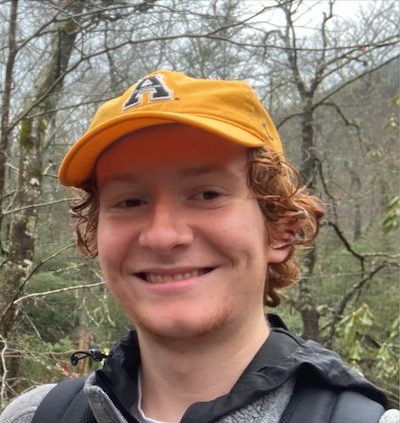 Liam Mullen '25
Liam Mullen '25
Liam’s project is going to use a survey designed to obtain both revealed preference and contingent behavior data for each respondent in regard to dark skies. The revealed preference aspect, which includes questions about current visits to dark sky areas, will be used to get an idea of individuals’ current usage of dark skies areas. The contingent behavior aspect, which focuses on how peoples’ visits to dark sky areas would change if light pollution increased, will be used to approximate how these peoples’ usage would change if there was more light pollution—specifically if the dark sky area no longer had greater visibility than a person’s home. The two types of data for each participant will then be compared to see how much peoples’ behaviors would change in response to a loss of dark skies. In turn, the differences will be analyzed to give an approximation of how much people value dark skies.
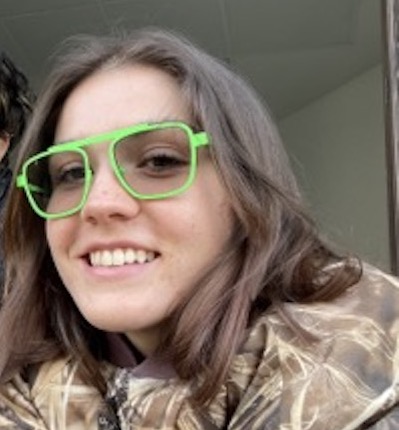 Nathalie San Fratello '25
Nathalie San Fratello '25
Nathalie’s project is currently titled, Personal Connection to our Dark Sky, and will aim to discover how much and in what ways people feel connected to dark skies and the issue of light pollution. Is it emotional, physical, or spiritual for them? What does being able to interact with the night sky provide for people? What have they lost? By engaging in questions based on personal and lived experience, Nathalie hopes to compile more knowledge about the importance of human connection to the sensory, physical, and spatial act of living. She is hoping to speak with people who have personal rituals, traditions, and practices that they are willing to share which keep them close to the earth and sky. Who has the most passionate connection to our skies and why? How do they sustain this connection despite light pollution? Overall, she will explore her own personal appreciation for present moments, human expression, the physical, and tactile importance of the physical world around us.


